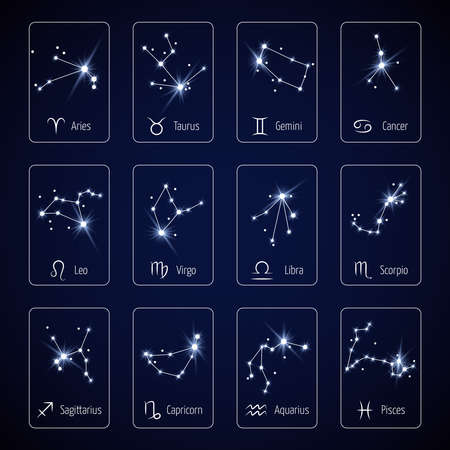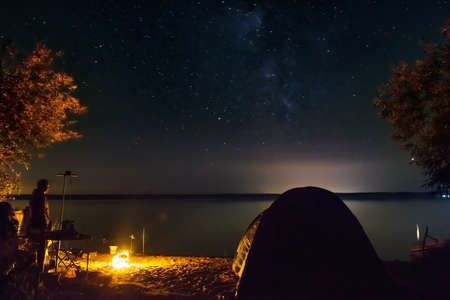Introduction: Stargazing in the UK
The British Isles offer a spectacular stage for stargazers, blending centuries of astronomical curiosity with some of the most accessible dark-sky reserves in Europe. Whether you’re gazing up from a rural Scottish loch, a Cornish clifftop, or even your own back garden, the UK’s northern latitude means our night skies are dotted with iconic constellations and host to breathtaking celestial events throughout the year. From ancient stone circles aligned to the stars to bustling modern astronomy clubs, Britain’s stargazing culture is both historic and vibrantly alive today. The relatively mild weather—at least outside of our notorious cloudy spells—alongside long winter nights and short summer dusks, creates unique opportunities for amateur astronomers. If you’re new to stargazing, start by wrapping up warm, investing in a simple pair of binoculars, and downloading a reliable stargazing app tailored for UK sky maps. Most importantly, remember that patience is key: let your eyes adjust to the darkness and give yourself time to connect with the timeless wonders above.
2. Iconic British Constellations Throughout the Year
Britain’s night sky offers a dynamic celestial show, with different constellations taking centre stage as the seasons shift. Whether you’re out in the Cotswolds, on a Scottish loch, or simply peering up from your garden, understanding which star patterns grace the UK skies each month enhances every stargazing adventure. Here’s a month-by-month guide to iconic constellations visible across Britain, complete with some local lore and historical context to enrich your skywatching experience.
| Month | Constellations Most Visible | Historical & Local Significance |
|---|---|---|
| January – February | Orion, Taurus, Gemini | Orion’s Belt is easily spotted and has guided travellers for centuries; Taurus features the Pleiades “Seven Sisters”, a group steeped in myth across Britain. |
| March – April | Leo, Cancer | Leo rises high in spring evenings, symbolising strength in British folklore; Cancer’s faint stars challenge keen-eyed observers. |
| May – June | Bootes, Virgo | The bright star Arcturus in Bootes was used by ancient farmers to mark planting times; Virgo’s Spica shines during short summer nights. |
| July – August | Aquila, Lyra, Cygnus (The Summer Triangle) | The Summer Triangle dominates warm evenings; Cygnus is known locally as the Northern Cross and is associated with migration myths. |
| September – October | Pegasus, Andromeda | Pegasus heralds autumn and leads to the Andromeda Galaxy—visible to the naked eye from dark rural locations. |
| November – December | Cassiopeia, Perseus | Cassiopeia’s W-shape is unmistakable above UK rooftops; Perseus links to meteor showers eagerly anticipated by local astronomers. |
Each of these constellations carries its own story within British culture—be it tales passed down through generations or traditions marking agricultural cycles. For amateur astronomers and families alike, following this calendar not only makes stargazing more engaging but also connects you to a rich tapestry of local heritage threaded through the stars overhead.

3. Must-See Celestial Events on the British Calendar
Stargazing in the UK isn’t just about spotting famous constellations – it’s also about marking your diary for some truly unmissable celestial events. Whether you’re new to astronomy or a seasoned sky-watcher, here’s a practical guide to the key happenings lighting up British skies each year, with tips to make your viewing experience unforgettable.
Meteor Showers Worth Staying Up For
The Perseids (peaking mid-August) and Geminids (mid-December) are the headline acts. These showers can deliver dozens of shooting stars per hour on clear nights. To catch them at their best, head out after midnight to a dark spot far from city lights—think Dartmoor, the Yorkshire Dales, or Northumberland International Dark Sky Park. Pack a blanket, dress warmly (British summer nights can still be nippy), and let your eyes adjust for at least 20 minutes.
Lunar and Solar Eclipses: Rare but Rewarding
While total solar eclipses are rare over Britain, partial eclipses and dramatic lunar eclipses do occur every few years. Check local astronomy society calendars for timings. For solar eclipses, never look directly at the sun—use certified eclipse glasses or try projecting the image through a pinhole onto paper. Lunar eclipses are safe to view with the naked eye; they often give the Moon an eerie coppery glow, best viewed from open countryside or your own back garden.
Planetary Alignments: Planets on Parade
Several times a year, planets like Venus, Jupiter, Mars, and Saturn become visible to the naked eye—and occasionally line up for stunning conjunctions. In early evenings during spring and autumn, look west after sunset for bright “stars” that don’t twinkle—these are likely planets. A simple pair of binoculars can reveal surprising detail, but many alignments are perfectly visible unaided. Apps like Stellarium or Star Walk can help pinpoint what’s happening where and when.
Practical Tips for British Stargazers
- Always check weather forecasts; clear skies are crucial.
- Dress in layers—even summer nights get cold across much of Britain.
- Bring a flask of tea or hot chocolate for comfort on longer watches.
- If venturing into rural areas, pack a red torch to preserve night vision.
Final Thoughts
No matter where you are in Britain—from London’s outskirts to remote Scottish moorland—these annual celestial events offer moments of wonder accessible to all. Mark your calendar, gather your kit, and prepare to be awed by what the British night sky has in store each year.
4. Best Times and Dark Sky Locations Across the UK
If you’re keen to enjoy the most iconic constellations and celestial events visible in British skies, timing and location are everything. The UK boasts some of Europe’s darkest skies, offering stargazers a fantastic opportunity to witness meteor showers, planets, and deep-sky wonders. Here’s your practical guide to the prime times of year and the top dark sky spots across England, Scotland, Wales, and Northern Ireland for an unforgettable night under the stars.
Prime Stargazing Times Throughout the Year
| Season | Celestial Highlights | Best Months |
|---|---|---|
| Winter | Orion constellation, Geminid Meteor Shower | December – February |
| Spring | Leo constellation, Lyrid Meteor Shower | March – May |
| Summer | Summer Triangle (Vega, Deneb, Altair), Perseid Meteor Shower | June – August |
| Autumn | Pegasus constellation, Draconid & Orionid Meteor Showers | September – November |
Top Dark Sky Locations by Region
| Region | Location Name | Key Features & Tips |
|---|---|---|
| England | Northumberland International Dark Sky Park | The largest protected dark sky area in Europe; ideal for both beginners and seasoned astronomers. |
| Scotland | Cairngorms National Park (Tomintoul & Glenlivet) | A designated International Dark Sky Park with regular stargazing events and crystal-clear Highland air. |
| Wales | Brecon Beacons National Park | Official Dark Sky Reserve; panoramic views and accessible stargazing spots throughout the park. |
| Northern Ireland | Mourne Mountains & Davagh Forest Park (Sperrins) | Astronomy centre with observatory; exceptional for meteor showers and Milky Way viewing. |
Essential Tips for a Spectacular Stargazing Experience:
- Avoid Full Moons: Aim for nights close to the new moon for darker skies.
- Check Local Weather: Clear, cloudless nights offer the best visibility—keep an eye on forecasts!
- Dress Warmly: Even summer nights can get chilly in exposed locations like moors or mountains.
- Packed Kit: Bring a red-light torch (to preserve night vision), a reclining chair or blanket, and hot drinks.
Your Stargazer’s Calendar in Action:
The magic of British stargazing lies in blending ancient landscapes with cosmic wonders above. Whether you’re marvelling at Orion over Hadrian’s Wall or catching the Perseids on a Welsh hillside, choosing the right time and place transforms your night into a memorable adventure under the constellations.
5. Essential Gear and British Stargazer Know-How
If you’re keen to make the most of Britain’s night skies, a bit of practical kit and some local know-how will go a long way. Here’s a handy guide packed with tried-and-tested gear suggestions, weather-wise wisdom, and a sprinkle of classic UK lingo straight from seasoned British stargazers.
Weatherproofing Your Stargazing Adventure
Let’s face it: British weather can be unpredictable, so being prepared is key. A reliable waterproof jacket (a “mac” in local parlance) and sturdy wellies are essentials for field or moor sessions—no one wants soggy socks while spotting Orion’s Belt. Don’t forget a warm woolly hat and gloves for those chilly clear nights; layers are your best friend when the temperature drops unexpectedly.
Kit List for UK Skies
- Binoculars: 8×42 is the sweet spot for portability and clarity, perfect for beginners and seasoned observers alike.
- Telescope: A Dobsonian or compact refractor suits the variable British climate—quick to set up and not too fussy about dew.
- Red Torch: Essential for reading star charts without ruining your night vision (“torch” is the UK term for flashlight).
- Star Chart or App: Choose a chart tailored for UK latitudes or download an app with real-time updates for constellations like Cassiopeia, Ursa Major, and seasonal meteor showers.
- Thermos Flask: Nothing beats a cuppa (tea or hot chocolate) under the stars—British stargazers swear by it.
Local Lingo & Top Tips from Veteran Stargazers
- Avoid “Light Pollution Hotspots”: Seek out “dark sky reserves” such as Exmoor, Northumberland, or Galloway Forest Park for crystal-clear views.
- “Cloud Dodging”: Keep an eye on the forecast—apps like Met Office or Clear Outside are favourites to check if it’ll be “clear as a bell” or “chucking it down.”
- Midge Alert: In summer, especially up north, pack insect repellent to fend off pesky midges during dusk sessions.
- Banter & Company: Many British stargazers enjoy gathering in small groups (sometimes called “astro meets”), sharing tips, biscuits, and banter while waiting for celestial events like the Perseids or lunar eclipses.
A Final Word
No matter if you’re new to the night sky or a lifelong enthusiast, blending practical kit with classic British know-how ensures every stargazing session is comfortable, sociable, and full of awe-inspiring sights unique to UK skies. Ready your flask and torch—adventure awaits above!
6. Community and Resources for UK Stargazers
Stargazing in Britain is not only about the wonders overhead, but also about connecting with a thriving community of like-minded enthusiasts. To enhance your celestial adventures, it’s worth exploring the wealth of societies, events, and resources available across the UK.
Join Local Astronomy Societies
Across England, Scotland, Wales, and Northern Ireland, astronomy societies offer a welcoming gateway into stargazing. Groups such as the Society for Popular Astronomy (SPA), Federation of Astronomical Societies (FAS), and regional clubs like the Birmingham Astronomical Society or Astronomy Ireland provide regular meet-ups, star parties, and hands-on workshops. These societies are ideal for beginners seeking guidance or seasoned observers looking to share their passion.
Attend Celestial Events and Star Parties
The UK calendar is dotted with public stargazing events—from rural dark-sky festivals in Northumberland and Galloway Forest Park to city-based gatherings during meteor showers or eclipses. The annual Kielder Forest Star Camp and South Downs Dark Skies Festival are particularly popular among both families and serious astronomers. These events often feature guided night sky tours, expert talks, and telescope viewings.
Public Observatories Worth Visiting
If you’re keen on observing through powerful telescopes or learning from professionals, consider visiting one of Britain’s public observatories. Notable choices include the Royal Observatory Greenwich, Cairngorms’ Highland Astronomy Tours, and the Bristol’s Clifton Observatory. Many observatories host themed nights timed with major celestial events—perfect opportunities to witness iconic constellations or rare phenomena under expert supervision.
Online Resources for Every Stargazer
The digital realm offers an abundance of tools tailored for British skies. Check out websites like Heavens-Above for satellite passes and ISS sightings over the UK, or apps such as Stellarium and SkySafari to identify constellations in real time. The Royal Astronomical Society regularly publishes event updates, while local council sites often list upcoming stargazing opportunities in your area.
A Final Word: Embrace the Night Together
No matter where you are in Britain—be it a bustling city or a remote countryside—there are communities ready to welcome you into the world of stargazing. By tapping into these resources and connecting with fellow enthusiasts, every night under the British sky can become a shared adventure filled with wonder.


